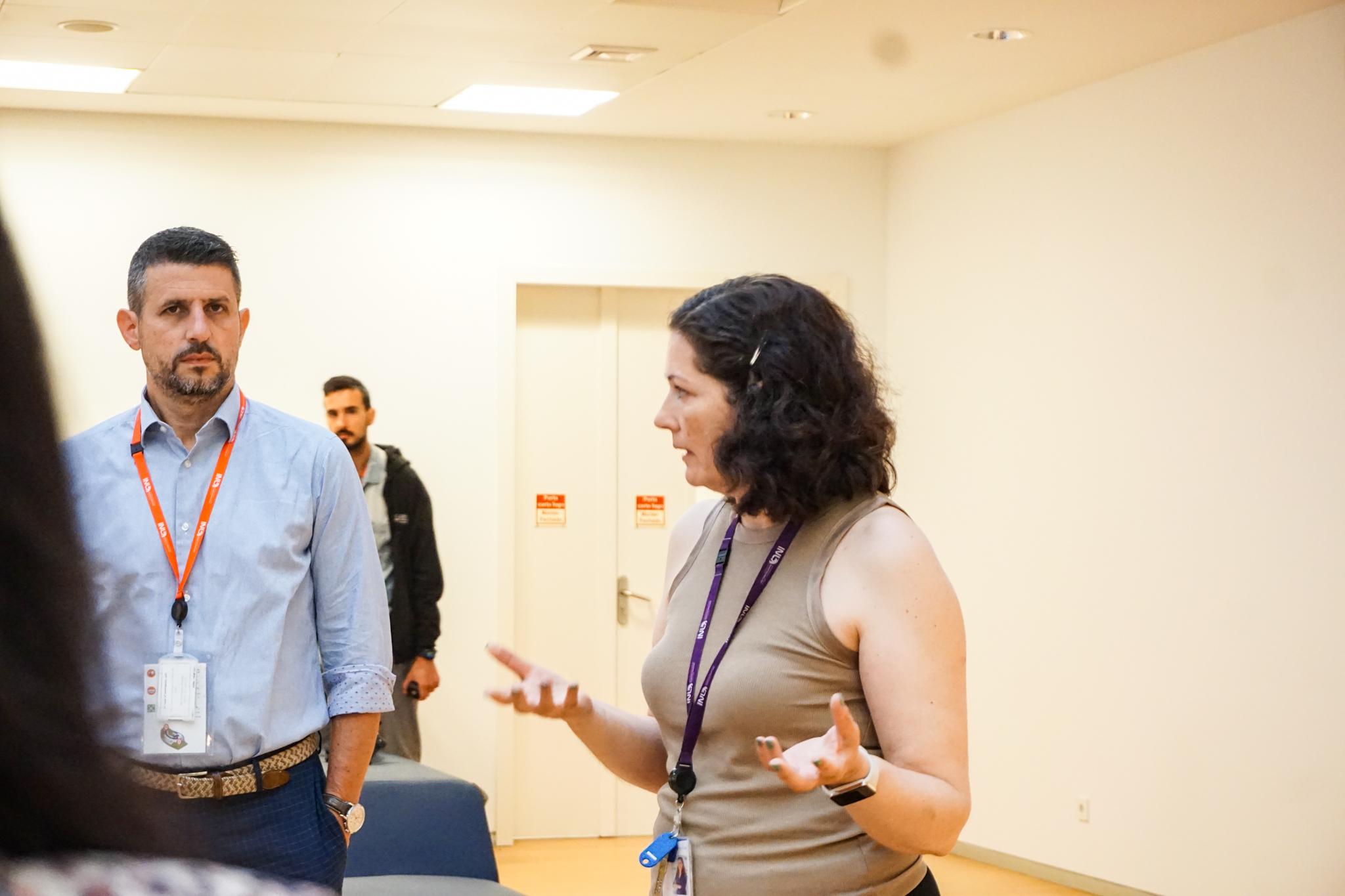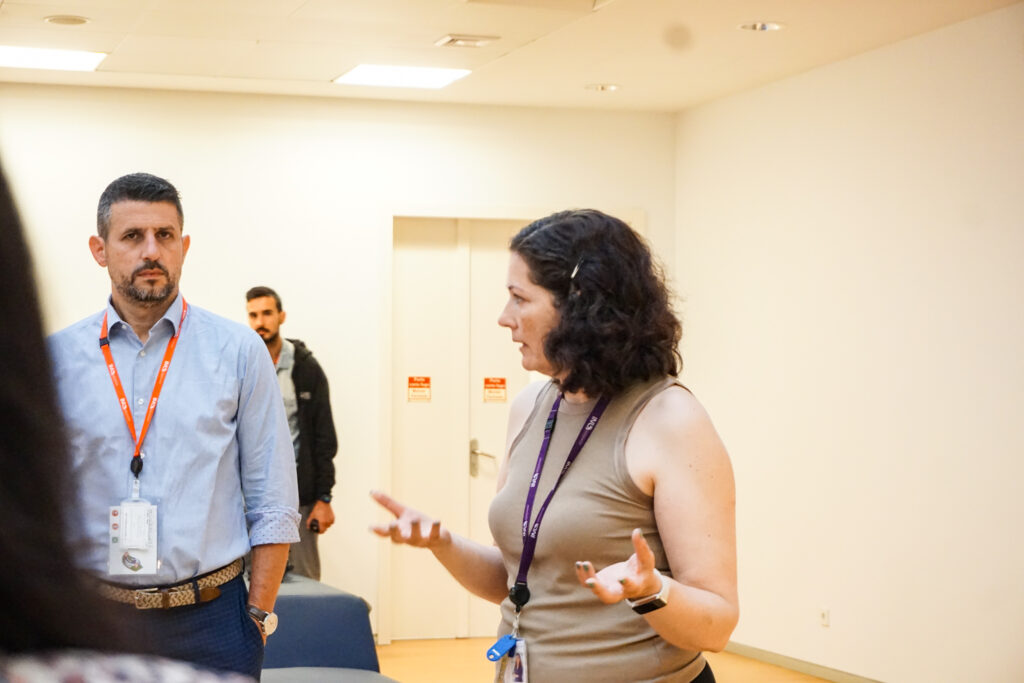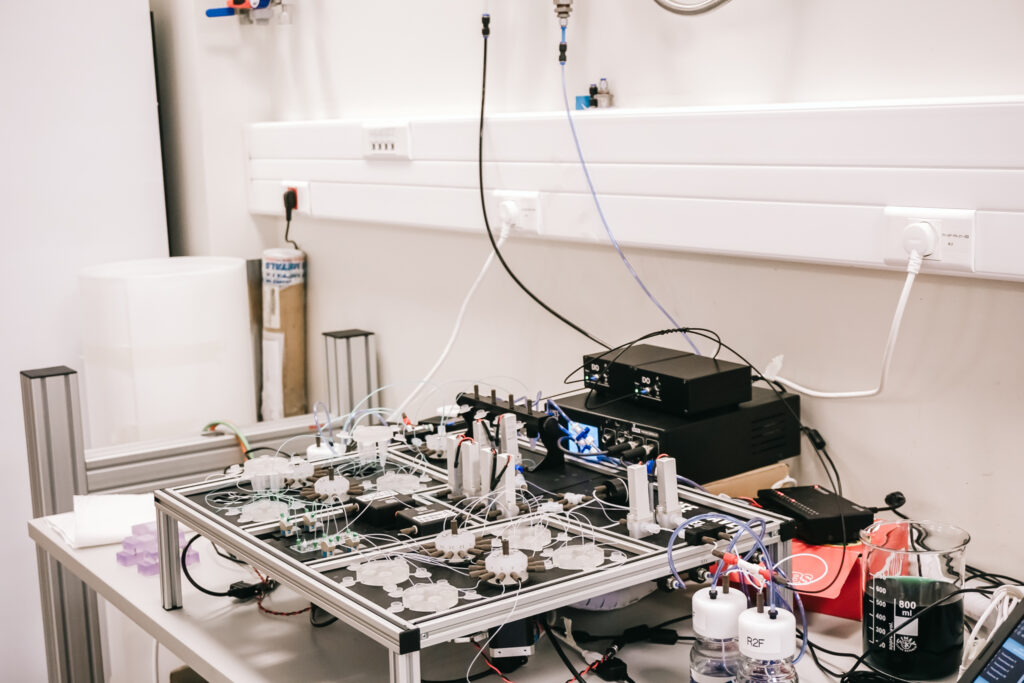
Meet Andrea Cruz, contributing to the first prototype of the LIFESAVER project
June 28, 2023
At INL since 2016, can you tell us a bit about your journey?
My name is Andrea Cruz, Portuguese, and I come from a small village 36km from Braga called Forjães. After completing my degree in microbiology from the faculty of Biotechnology in Porto, I decided that it would be good for my professional career to have an abroad experience, and I did a master’s in science from Montfort University UK. This great experience led me to pursue a PhD in Health Sciences from Minho University that has been conducted between the Life and Health Sciences Research Institute (ICVS) from Minho University and the Trudeau Institute (USA).
In 2016, I joined INL with a Marie Curie fellow to develop point-of-care devices for detecting biomarkers in the context of different disease diagnostics. Since then, I have worked on this interface between medicine and nanotechnology, mainly identifying clinical biomarkers and developing biosensing strategies and lab-on-chip devices for medical applications.
I am a staff researcher of the Nanodevices group, working on the LIFESAVER research project funded by the European Commission under the Green Deal. The Lifesaver project involves fourteen European institutions, including universities, research centres and companies, working together, sharing knowledge, and driven by one goal. To reduce the rate of prenatal, neonatal and preterm deaths across Europe.

Can you present the LIFESaver project?
The number of preterm births is growing despite advances in medicine as more pregnancies are at later ages, but also due to increasing environmental threats and lack of suitable treatments. With four million prenatal deaths occurring worldwide each year, 450 per hour, we must pay attention to this issue to ensure optimal fetal health.
In the LifeSaver vision, every pregnant woman must have a proper living environment with minimal risks to the fetus. This will only be possible if the regulations to use and control potentially risky chemical and medicinal products are based on scientific knowledge.
Currently, there is no way to do clinical tests on a pregnant woman for safety and ethical reasons nor to study the effects of pollutants, toxins, or other compounds present in our environment.
The LifeSaver project aims to address unmet healthcare needs related to safeguarding fetal-maternal health, especially during the first 12 weeks of pregnancy (the first trimester), the most critical period in fetal development.

Can you briefly explain the technology involved in the project?
The LIFESAVER study is unique and the first of its kind, but it is extremely necessary to protect pregnant women and their babies.
In order to develop a “Biodigial twin” model that mimics what happens in real pregnancy, the Lifesaver consortium joined experts in nanotechnologies, microfluidic systems, artificial intelligence, digital twins, cell cultures, placentas tissue, and European legislation, among others.
At INL, we are responsible for designing and fabricating the device to integrate a membrane that simulates a placenta and simulate pregnancy states. This device will be used to test the drugs and chemicals to predict the passage of chemicals from the mother to the fetus and to study their impact on the placenta cells. Additionally, at INL, we are developing biosensing strategies to quantify molecular biomarkers indicative of cell damage.
After a year and a half of research, we are already testing the first prototype.